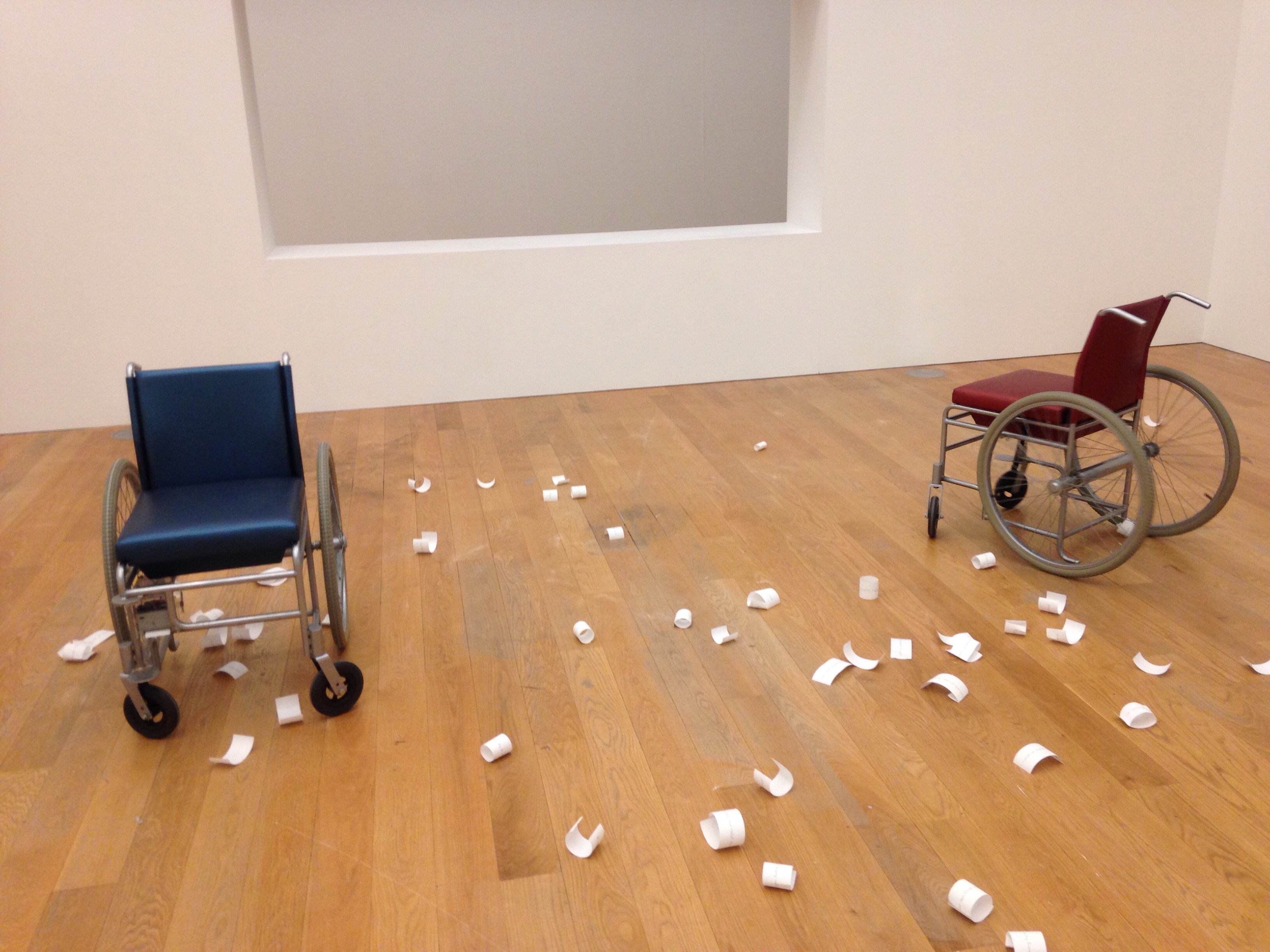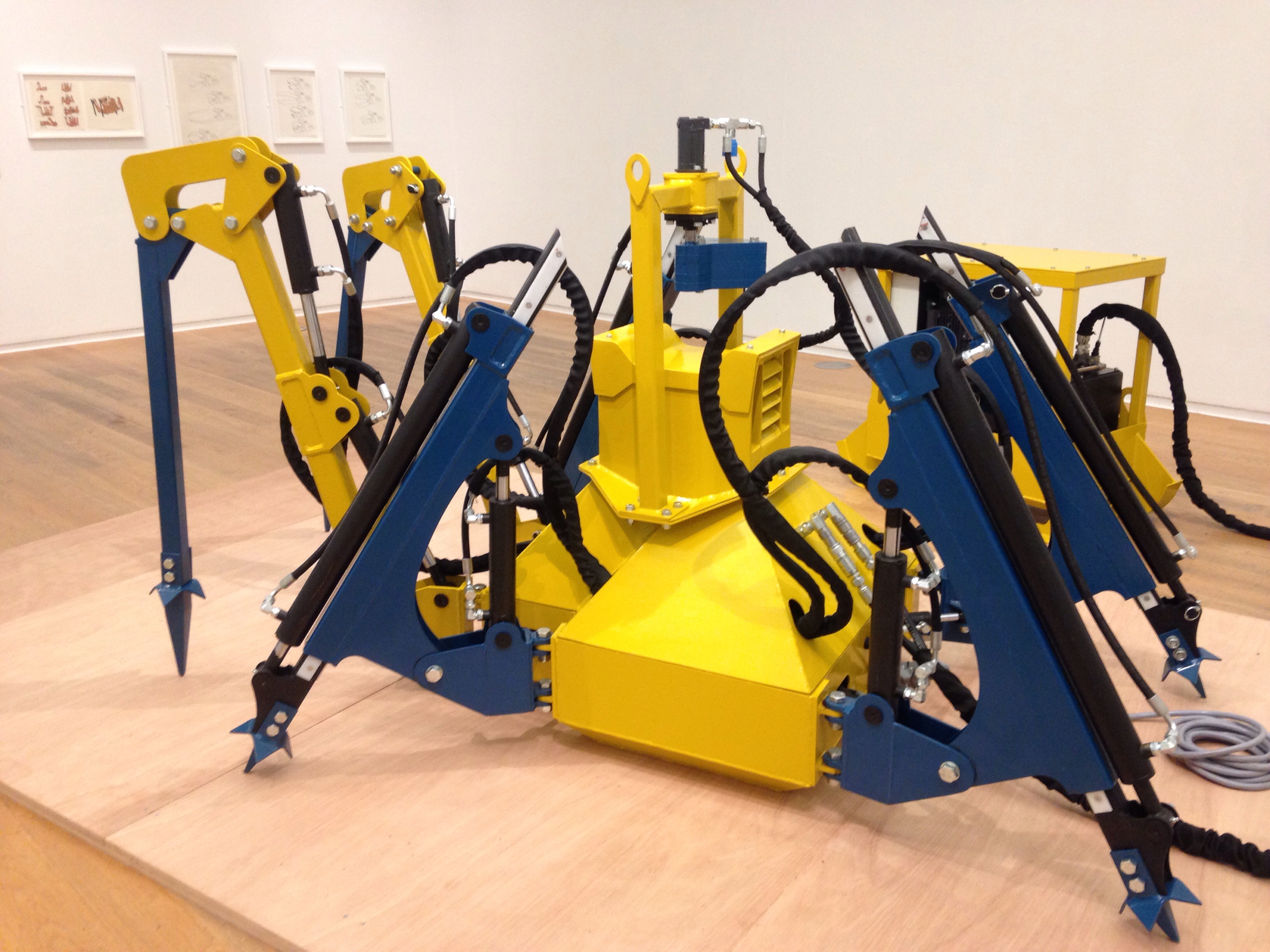At the beginning of the 21st century, we are told that there are no boundaries between art, science and technology.
Over sixty years since Alan Turing posed his famous question about what makes a machine human, this ground breaking exhibition in the making for two years or more combines Manchester’s history, culture and scientific advancement.
Eight artists are on display over three floors asking us to examine the human condition, our place in the world and whether anything could take our place.
Meet the Telestep, only the second time that this piece has been on show,it looks like something that has come out of an industrial factory and the artist, James Capper, was inspired by the aesthetics of earth moving equipment and industrial machinery.This walking sculpture will operate live on certain dates curing the gallery, surrounded by nipper sculptures sitting on the blocks that their viscous teeth have bitten into.
Mari Velonaki’s Fish and Bird on the same floor creates an intimate experience for two people alone with two robots in the form of custom made wheelchairs based on the characters from a Greek fairytale, destined never to be together.

They constantly are printing out notes to each other which litter the floor like till receipts-it looks simple but in fact this is complex stuff, their behaviour changes according to the days of the week.
David Link’s installation of Love Letters 1.0 takes us back to the early 1950’s and the early exploration of computer science exploring the logic between the machine and the imagination, inspired by pioneering programmer Christopher Strachey who decided to generate a programme writing love letters. This meticulous restoration project sees a contemporary version of the programme run on a replica computer.
Perhaps the strangest of all though is reserved for Tove Kjellmark’s robotic art, two robotic skeletons conducting a conversation in a darkened living room,The audience is invited to sit down but are told in no uncertain turns to shut up by the male skeleton if they interrupt.
This new commission is an experiment from the artist inspired by meeting people from the human brain project-the dialogue talks of consciousness and what life means.The control system SpiNNicker has been developed at the University of Manchester led by Professor Steve Furber.

The dialogue on a thirteen minute loop is based on a dream of having one’s brain taken out, divided into three sections and reinserted.
On the 1st floor a purple robot, Comb over Joe, roams freely around the space, interacting with visitors while on the floor above the visitor can attempt to overwrite the robot’s autonomy.
It shares the room with a video of a toy panda being operated on in a theatre stripped down to its bare essentials whilst making whimpering noises.
On the ground floor visitors can interact with Agent Ruby, an online intelligent agent whom you correspond with by typing the old fashioned way in a keyboard on a laptop. Ruby has lived on the Internet for five teen years constantly adapting and renewing, but there is a serious side says Curator showing us how algorithms effect much of our life these days in what we buy, where we go, how we communicate.
You Chen Wang’s ambitious new work Heart to Heart explores human qualities within machines. As artist in residence at the Museum of Science and Industry, she has produced a sco fiction text and a film installation which brings together four objects in the museum, a hot metal line casting machine, a drawing by Frank Whiteman, preserving the Firgrove Mill tandem compound condensing machine which dates from 1907 and the former Liverpool Road station building, the site of the terminus of the first passenger railway.
The exhibition runs until the 5th June at Manchester Art Gallery and is free to enter.







